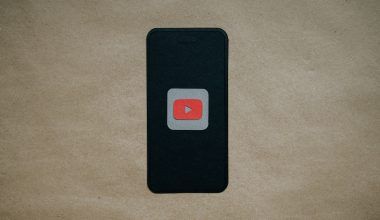Have you ever listened to a song and felt like it was written just for you? That’s the power of great song lyrics. Lyrics are not just words—they tell stories, share feelings, and bring people together. They can make us happy, help us heal, or give us strength.
If you want to make song lyrics that connect with people, don’t worry—it’s not as hard as you think! In this blog, we’ll take you through simple steps to write lyrics that everyone will love. Whether you’re just starting or have been writing for years, these tips will help you create something special.
1. Start by Finding Inspiration
Every song begins with an idea. It can come from anywhere—a happy memory, a hard time, a dream, or even a simple walk in the park. Think about what moves you. Inspiration is all around; you just need to notice it.
Easy Ideas to Find Inspiration:
- Think of a moment that made you smile or cry.
- Look at old photos or messages from friends.
- Watch the rain or listen to the sounds around you.
Tip: Keep a small notebook or use your phone to save ideas. Even a single word or phrase can grow into a full song later.
2. Know Who You’re Writing For
When you write lyrics, think about the people who will listen to your song. Are they kids, teenagers, or adults? Are they feeling happy, sad, or excited? Knowing your audience will help you use words and themes that they understand and enjoy.
Examples:
- For a love song: Use words like “heart,” “forever,” or “dream.”
- For a fun song: Try words like “dance,” “sunshine,” or “party.”
Remember: Simple words often work best because everyone can relate to them.
3. Pick One Idea or Theme
Every song has a main idea, like love, hope, or sadness. Choose one theme and stick to it. This makes your lyrics easier to follow and more powerful.
How to Choose a Theme:
- Think about what you want to say.
- Write down a few words or sentences about it.
Example:
If your theme is “freedom,” you could write:
- “Flying high like a bird.”
- “Breaking free from chains.”
- “Chasing the open sky.”
These ideas can guide your lyrics and keep them focused.
4. Write a Catchy Hook
The hook is the part of the song that people remember the most. It’s usually in the chorus and sums up the main idea. A good hook is simple, fun to sing, and sticks in your head.
Examples of Famous Hooks:
- “I’m on the edge of glory” (Lady Gaga).
- “We don’t talk about Bruno” (Encanto).
- “Let it go, let it go” (Frozen).
To create your own hook, try this:
- Write one short sentence about your theme.
- Repeat it or add a rhyme.
Example for a Love Song Hook:
“You’re my moonlight, my starlight, my everything tonight.”
5. Use Verses to Tell a Story
Verses are like the chapters of a book. They give details about the story or feelings in your song. Each verse should build on the last one and lead into the chorus.
Example of a Verse Structure:
- First Verse: Introduce the story.
“I was walking down the street, lost in my thoughts.” - Second Verse: Add emotion or a twist.
“Then I saw your smile, and my world lit up.”
Tip: Use everyday language to make your verses relatable.
6. Add Rhyme and Rhythm
Rhyming makes your lyrics sound musical. But don’t force it—let the words flow naturally. Rhythm, on the other hand, is the beat of your words.
Simple Rhyming Examples:
- AABB:
“You are my sun, you are my moon,
Without you, my heart’s a tune out of tune.” - ABAB:
“I feel the breeze, it lifts my soul,
The sky is clear, my heart is whole.”
Tip: If you’re stuck, use a rhyming dictionary for help.
7. Paint Pictures with Words
The best lyrics let people see, feel, and imagine. Instead of saying, “I’m happy,” describe what happiness looks like.
Example:
- Instead of: “I’m sad.”
- Try: “Raindrops fall, washing away my broken heart.”
This makes your lyrics more vivid and emotional.
8. Ask for Feedback
Once you’ve written your lyrics, share them with someone you trust. Ask them:
- Do these lyrics make sense?
- How do they make you feel?
- What part do you like the most?
You don’t have to take all the feedback, but it can help you see your lyrics from a new perspective.
9. Match Your Lyrics to Music
Your lyrics need to fit the melody of your song. Sing them out loud to see how they flow. Adjust the words or rhythm if needed.
Tips for Matching Music:
- Clap or tap while singing to stay in rhythm.
- Use pauses for dramatic effect.
- Play with the speed of your words to match the mood.
10. Be Yourself
The most important thing is to be real. Write about things that matter to you. Your honesty will shine through and touch your listeners.
Example:
If you’ve experienced heartbreak, don’t shy away from writing about it. Share your feelings as they are.
Remember: Your voice is unique, and no one can tell your story better than you.
11. Keep Practicing
Songwriting takes time and practice. The more you write, the better you’ll get. Even if your first song isn’t perfect, don’t give up.
Fun Practice Ideas:
- Try writing one lyric every day.
- Rewrite the lyrics of your favorite songs with your own words.
- Work with a friend to create a fun duet.
Conclusion: Your Words Can Make a Difference
To make song lyrics that people will love, all you need is a little creativity, practice, and patience. Start with an idea, keep your words simple, and pour your heart into it. Whether it’s a happy tune or a soulful ballad, your lyrics can become the soundtrack to someone’s life.
So grab a pen, start writing, and let your words fly!
Related Articles:
For further reading, explore these related articles:
- Learn Music at Home: A Simple and Easy Guide
- How to Get Sponsored: A Step-by-Step Guide for Artists and Creators
- How to Register Your Song: A Simple Guide for Every Musician
For additional resources on music marketing and distribution, visit Deliver My Tune.






